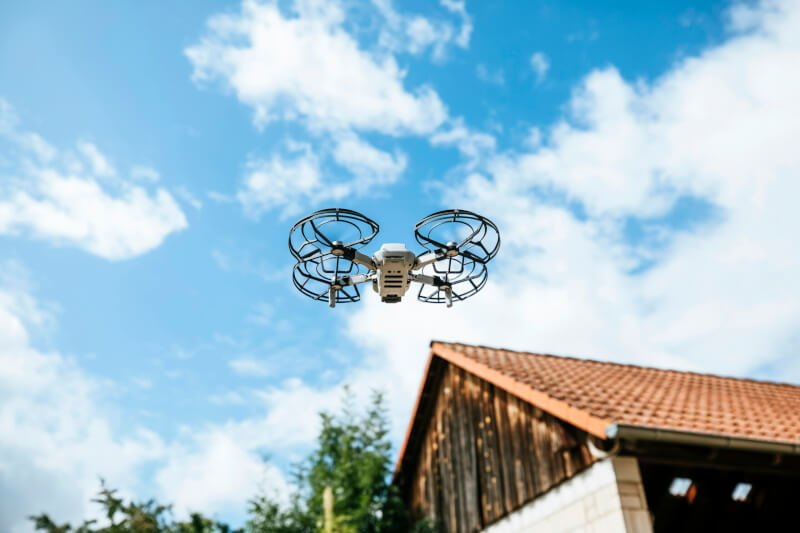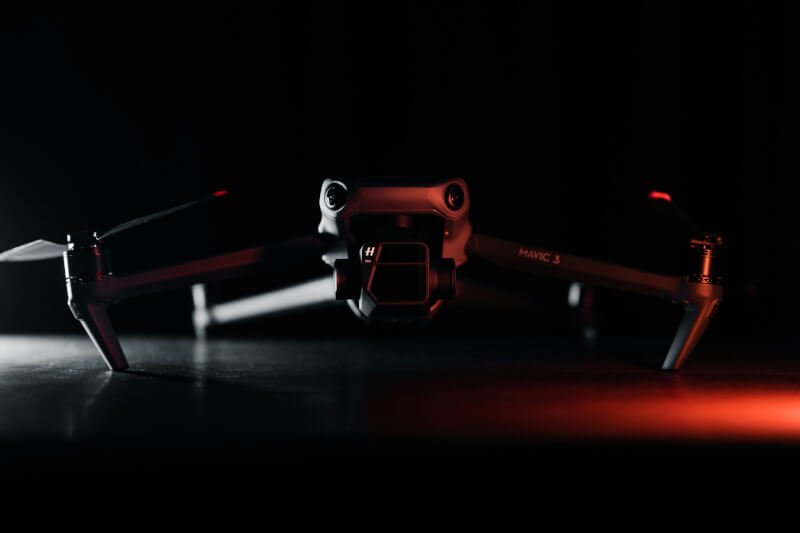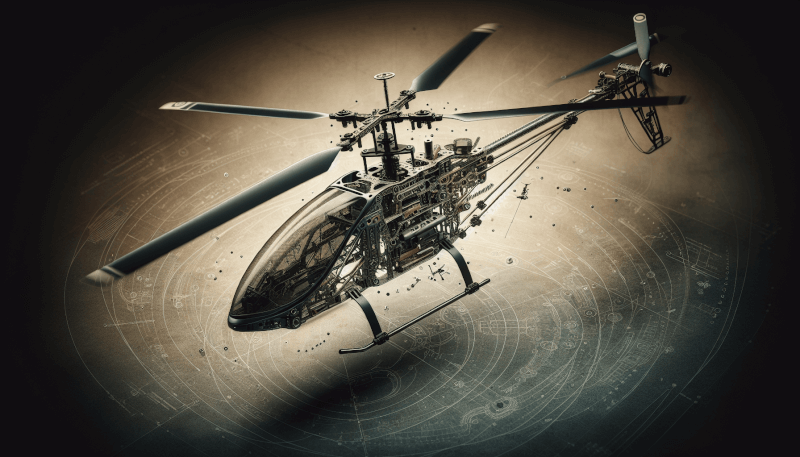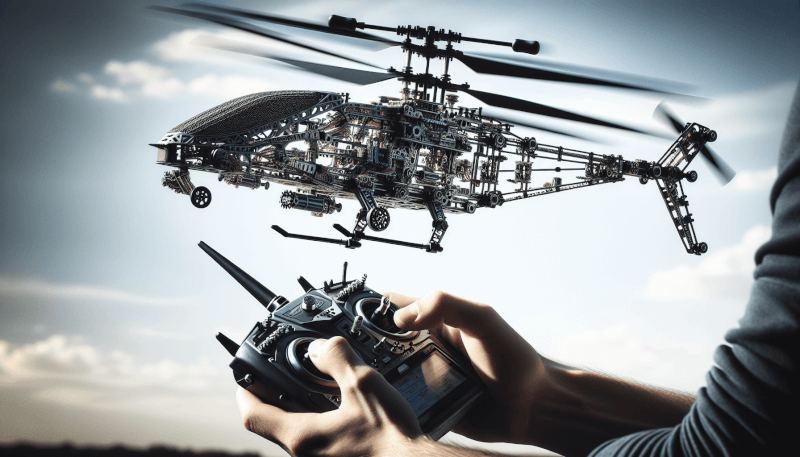Are you fascinated by remote control helicopter flying but unsure of how the controls work? Fear not, as this article will provide you with a comprehensive understanding of the basics of RC heli flight controls. Whether you are a beginner or looking to brush up on your knowledge, we will break down the different components and functionalities of the controls, helping you navigate the skies with confidence. From mastering hovering and turning to executing complex maneuvers, you’ll be soaring through the air in no time!

1. Introduction to RC Helicopters
Brief history of RC helicopters
RC helicopters have been around since the 1960s, with advancements in technology allowing for more realistic flight characteristics and improved control. Initially, RC helicopters were powered by rubber bands, but they quickly evolved to use small internal combustion engines. Over time, electric-powered RC helicopters became more popular due to their quiet operation, affordability, and ease of maintenance.
Different types of RC helicopters
There are various types of RC helicopters available, each designed for specific purposes and skill levels. Beginners often start with coaxial helicopters, which have two sets of main rotors that counteract each other’s torque, making them more stable and easier to control. For intermediate pilots, fixed-pitch helicopters are common choices as they offer a greater degree of control and maneuverability. Advanced pilots usually opt for collective-pitch helicopters that grant even greater control and agility, allowing for aerobatic maneuvers.
Importance of understanding flight controls
Understanding flight controls is crucial when piloting an RC helicopter. It enables the pilot to maintain stability, execute maneuvers, and safely operate the aircraft. With a good grasp of flight controls, pilots are able to correct for any unwanted movements, maintain balance, and achieve precise control over the helicopter’s flight path. It also helps pilots anticipate and respond to changing wind conditions or other external factors that may affect flight performance.
2. RC Helicopter Components
Main rotor and tail rotor
The main rotor is responsible for generating lift and providing the necessary thrust to control the helicopter’s movements. It consists of two or more blades that rotate in a circular motion, producing the required lift. The tail rotor, on the other hand, counteracts the torque produced by the main rotor, helping the helicopter maintain stability and preventing it from spinning uncontrollably.
Servos and control linkages
Servos are small devices that mechanically move the control surfaces of an RC helicopter, such as the swashplate, throttle, and tail rotor. They receive signals from the transmitter and work in conjunction with the control linkages to translate these inputs into physical movements. These components are crucial in ensuring precise and responsive control over the helicopter’s flight.
Transmitter and receiver system
The transmitter is what the pilot uses to control the RC helicopter. It sends radio signals to the receiver, which is mounted on the helicopter. The receiver then translates these signals into electrical commands that control the servos and, consequently, the helicopter’s movement. The transmitter and receiver system must be properly synchronized to ensure reliable and accurate communication between the pilot and the helicopter.
Battery and power system
RC helicopters are powered by batteries, typically lithium polymer (LiPo) batteries due to their high energy density. These batteries provide the necessary electrical power to run the motor, servos, and other electronic components. It’s important to choose the right battery for your RC helicopter to ensure optimal performance and flight time. Additionally, regular maintenance and proper charging practices are essential for extending the life of the battery and ensuring safe operation.
3. Understanding RC Helicopter Axes
Pitch axis control
The pitch axis refers to the imaginary line that runs from the front to the back of the helicopter. Pitch control allows the pilot to adjust the angle of the main rotor blades, thereby altering the lift and forward or backward movement of the helicopter. By controlling the pitch angle using the cyclic control, pilots can make the helicopter ascend or descend.
Roll axis control
The roll axis runs from one side of the helicopter to the other. Roll control enables the pilot to tilt the helicopter laterally, making it bank to the left or right. This is achieved by altering the cyclic control, which varies the pitch angle of the rotor blades at different points in their rotation. Precise roll control is essential for executing smooth turns and maintaining stability during flight.
Yaw axis control
The yaw axis is perpendicular to both the pitch and roll axes, running vertically through the helicopter. Yaw control allows the pilot to rotate the helicopter around its vertical axis, changing its heading or direction of flight. This is accomplished by adjusting the tail rotor’s pitch using the rudder control. Proper yaw control is essential for maintaining orientation during flight and executing coordinated turns.
4. Basic Flight Controls
Throttle control
Throttle control regulates the power output of the main rotor, determining the helicopter’s altitude or rate of climb. Increasing the throttle brings the helicopter higher, while reducing it allows for descent or hovering at a specific altitude. Mastering throttle control is crucial for maintaining steady flight and executing various maneuvers.
Collective pitch control
Collective pitch control alters the pitch simultaneously on all rotor blades of a collective-pitch helicopter. It allows the pilot to change the lift generated by the main rotor and, consequently, control the upward or downward movement of the helicopter. By adjusting the collective pitch, pilots can achieve smooth transitions between hover and forward flight, as well as perform vertical takeoffs and landings.
Cyclic control
Cyclic control adjusts the pitch angle of the rotor blades based on their position in the rotation cycle. It allows the pilot to control the helicopter’s movement along the pitch and roll axes. For example, by tilting the cyclic control forward, the helicopter will pitch forward and accelerate in that direction. Precise control of the cyclic is essential for executing precise maneuvers and maintaining stability during flight.
Tail rotor control
Tail rotor control is responsible for countering the torque produced by the main rotor. It allows the pilot to control the helicopter’s yaw or rotational movement. By manipulating the rudder control, the pilot can rotate the helicopter left or right. Proper tail rotor control ensures stable flight and precise heading control during turns.

5. Flight Modes and Transmitter Settings
Mode 1 vs Mode 2 transmitters
The choice between Mode 1 and Mode 2 transmitters refers to the arrangement of the control sticks. In Mode 1, the throttle and rudder controls are located on the left stick, while the collective and cyclic controls are on the right stick. In Mode 2, the throttle and collective controls are on the left stick, and the rudder and cyclic controls are on the right stick. The choice between the two largely depends on personal preference and familiarity.
Beginner, intermediate, and advanced flight modes
RC helicopters often come with flight modes designed to accommodate different skill levels. Beginner mode typically limits the helicopter’s speed and maneuverability, making it more stable and forgiving for new pilots. Intermediate and advanced modes allow for more aggressive flight characteristics, enabling pilots to perform aerobatic maneuvers and push the limits of their skills. It’s important for pilots to progress through the different modes as their proficiency improves.
Adjusting control sensitivity
Transmitters often offer the option to adjust control sensitivity or exponential settings. This allows the pilot to customize the responsiveness of the controls to their liking. Increasing the sensitivity enhances maneuverability, making the helicopter more responsive to small control inputs. Conversely, decreasing sensitivity can make the helicopter easier to control for beginners or in less favorable flying conditions. Experimenting with sensitivity settings can help pilots find the balance that suits their flying style.
6. Flight Maneuvers
Hovering
Hovering is one of the most fundamental flight maneuvers for an RC helicopter pilot. It involves maintaining a stable position in the air, keeping the helicopter balanced and stationary. This maneuver requires precise control of all flight axes, especially pitch and throttle. Patience and practice are key to achieving a stable hover, as minor adjustments and constant focus are necessary to counteract any external factors that may affect stability.
Forward flight
Once comfortable with hovering, pilots can progress to forward flight, which involves moving the helicopter horizontally while maintaining altitude. To initiate forward flight, the pilot gradually increases the collective pitch while simultaneously adding cyclic input to tilt the helicopter forward. It’s important to maintain smooth and precise control to ensure a stable and controlled forward flight.
Banking turns
Banking turns involve smoothly rolling the helicopter to one side while maintaining altitude and a consistent heading. This maneuver requires coordinated control of both the cyclic and collective pitch controls. The pilot must slightly decrease the collective pitch and apply cyclic input to roll the helicopter into the turn, simultaneously using tail rotor input to maintain heading. Mastering banking turns is essential for navigating through obstacles and executing precise flight paths.
Autorotation
Autorotation is a critical maneuver used in emergency situations, such as during a loss of power or engine failure. It involves utilizing the helicopter’s stored rotational energy to safely glide it to the ground without power. Perfected through practice, autorotation requires carefully adjusting the collective pitch to maintain a controlled descent rate and landing safely while managing the helicopter’s aerodynamic characteristics.

7. Safety and Pre-flight Checks
Checking battery levels
Before each flight, it’s crucial to check the battery levels of both the RC helicopter and the transmitter. Insufficient battery charge can lead to unexpected power loss during flight, risking a crash and potential damage to the helicopter. Regularly monitoring and properly charging the batteries will ensure longer flight times and reduce the risk of mid-flight emergencies.
Inspecting rotor blades
Inspecting the rotor blades for any signs of damage or wear is essential for safe flight. Look out for cracks, chips, or any deformation that may affect the helicopter’s balance and performance. It’s also important to ensure that the rotor blades are securely attached and properly balanced. Any issues should be addressed and resolved before attempting to fly.
Ensuring proper servo operation
Servos play a critical role in flight control, making it essential to regularly inspect and test their operation. Ensure that the servos move smoothly and precisely in response to transmitter commands. Any signs of jittering, sticking, or abnormal noise should be addressed immediately. Regular maintenance and lubrication of servos will help extend their lifespan and ensure reliable flight control.
Radio interference precautions
Radio interference can disrupt the communication between the transmitter and the receiver, leading to loss of control or erratic behavior of the helicopter. To minimize interference, it’s important to keep a safe distance from potential sources such as Wi-Fi routers, power lines, and other RC equipment operating on the same frequency. Furthermore, always ensure that the transmitter and receiver antennas are properly extended and oriented for optimal signal transmission.
8. Troubleshooting Flight Control Issues
Unresponsive controls
If you experience unresponsive controls, the first step is to check the battery levels and connections. Low battery voltage can decrease the servo’s power and result in sluggish or unresponsive controls. Additionally, ensure that the transmitter and receiver are properly synchronized and the control surfaces are free from obstruction or binding. If the issue persists, consult the manufacturer’s troubleshooting guide or seek help from experienced pilots.
Drifting or erratic flight
Drifting or erratic flight can be caused by various factors, including wind, improper trim settings, or unbalanced rotor blades. A slight adjustment of the trim controls on the transmitter can help correct minor drifting issues. However, if the helicopter continues to exhibit erratic flight behavior, it may indicate a more serious problem. Check the balance and integrity of the rotor blades, inspect the servos, and ensure proper linkage alignment.
Tail rotor control problems
Sudden loss of tail rotor control can result in uncontrolled spinning or instability. If you experience tail rotor control problems, check for any damage to the tail rotor blades or loose connections. Misalignment or damage to the tail rotor itself can also cause issues. Additionally, ensure that the tail rotor servo is operating correctly and responding to transmitter commands as expected. Seek assistance from experienced pilots if the problem persists.
Trimming and calibration
Proper trim settings and calibration are critical for well-balanced and responsive flight control. Trim adjustments allow the pilot to compensate for any small imbalances or deviations in flight characteristics. Calibration, on the other hand, ensures accurate alignment and synchronization of the control surfaces, servos, and gyroscopes. Regularly check and fine-tune the trim settings and calibrate the helicopter’s components to achieve optimal flight performance.

9. Learning and Practice Tips
Start with a simulator
Using a simulator is a highly recommended way to learn and practice RC helicopter flying. Simulators provide a realistic and risk-free environment to develop flight skills, allowing pilots to hone their control techniques and practice various maneuvers. They also offer the opportunity to familiarize oneself with different models and adjust settings, helping build confidence before taking to the skies with an actual helicopter.
Seek guidance from experienced pilots
Learning from experienced pilots can significantly expedite the learning process and provide valuable insights. Joining an RC helicopter club or attending local flying events can connect you with knowledgeable individuals who are eager to share their expertise. They can offer guidance on equipment selection, flight techniques, and troubleshooting common issues. Engaging with the RC helicopter community can foster camaraderie and provide a wealth of knowledge for continuous improvement.
Start with basic maneuvers
When beginning your RC helicopter journey, it’s important to start with basic maneuvers and gradually progress to more advanced ones. This allows you to build a solid foundation of skills and gradually become comfortable with the helicopter’s flight characteristics. Mastering hovering, forward flight, and basic turns before attempting more complex aerobatic maneuvers will enhance your control and increase the enjoyment of flying.
Practice regularly
Consistency and practice are key to becoming a skilled RC helicopter pilot. Regular practice sessions help build muscle memory and reflexes, allowing you to respond quickly to changing flight conditions. Dedicate time each week to flying and focus on specific maneuvers or areas that need improvement. Practicing in different weather conditions and environments will further enhance your adaptability and flying skills.
10. Conclusion
Summary of key points
In this comprehensive article, we have explored the world of RC helicopters, understanding their components, flight controls, flight modes, maneuvers, and safety measures. We have seen the importance of learning and practicing flight controls to ensure safe and enjoyable flights. By understanding the different components and axes of an RC helicopter, pilots can manipulate the throttle, collective pitch, cyclic, and tail rotor controls to achieve various flight maneuvers and navigate through different flight modes. Regular maintenance, pre-flight checks, and troubleshooting knowledge are vital to ensure safe and successful flights.
Encouragement to continue learning and improving
Embarking on the journey of RC helicopter flying can be both challenging and rewarding. As with any skill, it takes time, practice, and dedication to become proficient. Remember to start with a solid foundation, seek guidance from experienced pilots, and practice regularly to enhance your skills. Don’t be discouraged by setbacks or challenges along the way; instead, view them as opportunities for growth and improvement. With dedication and persistence, you will unlock the full potential of RC helicopter flying, expanding your abilities and enjoying the excitement of this thrilling hobby. So, grab your transmitter, take to the skies, and continue learning and improving as an RC helicopter pilot!



